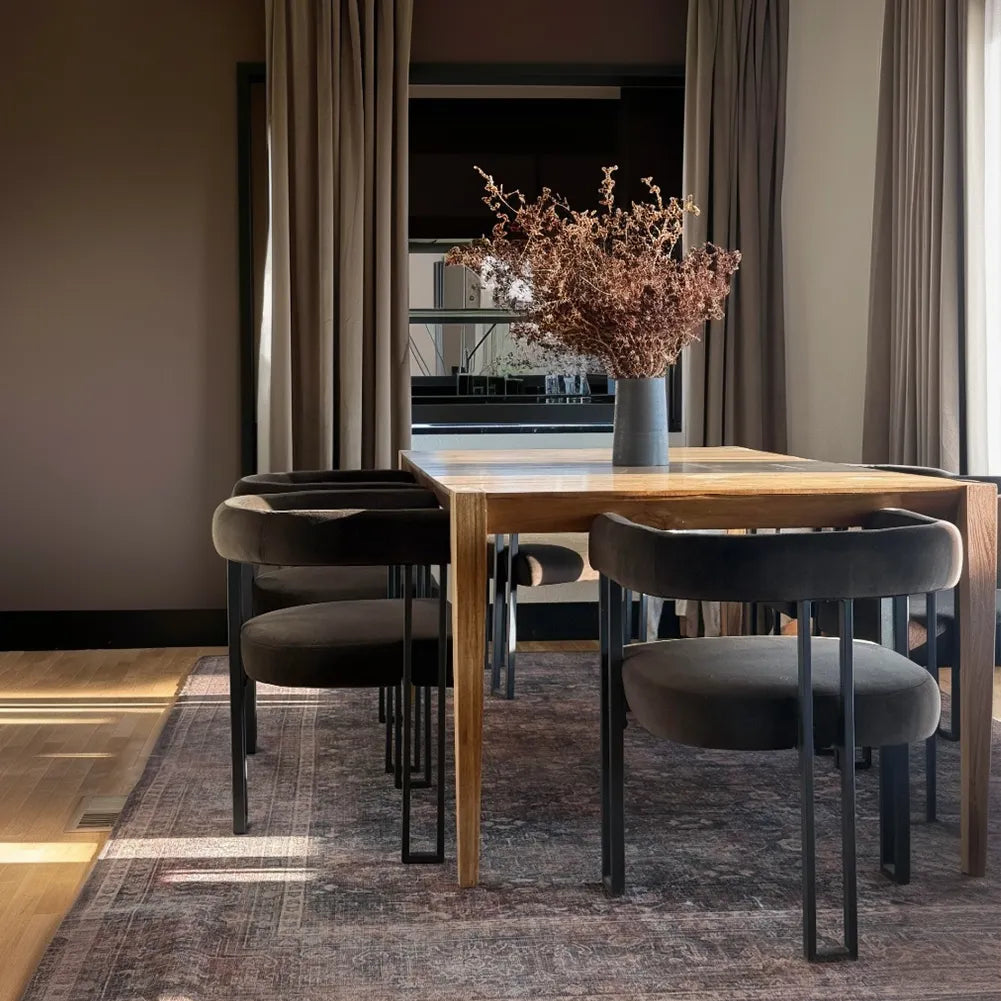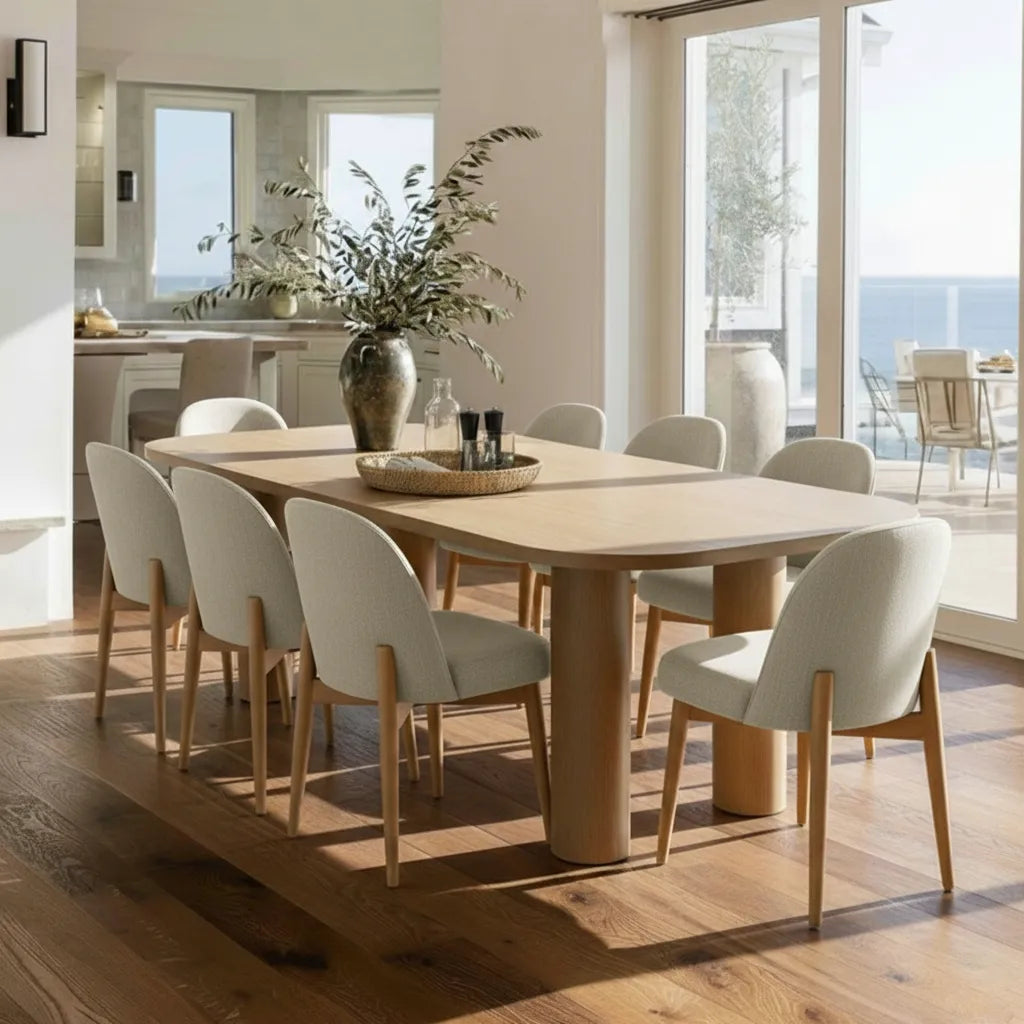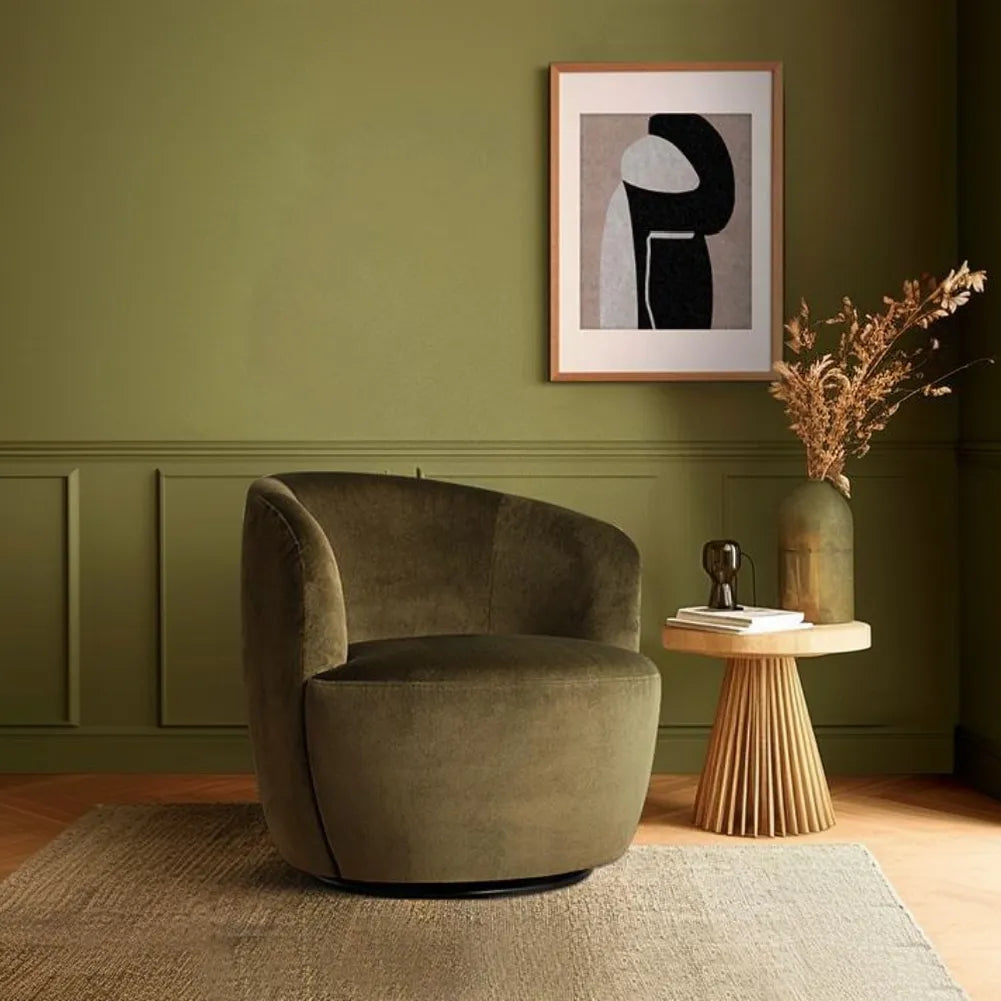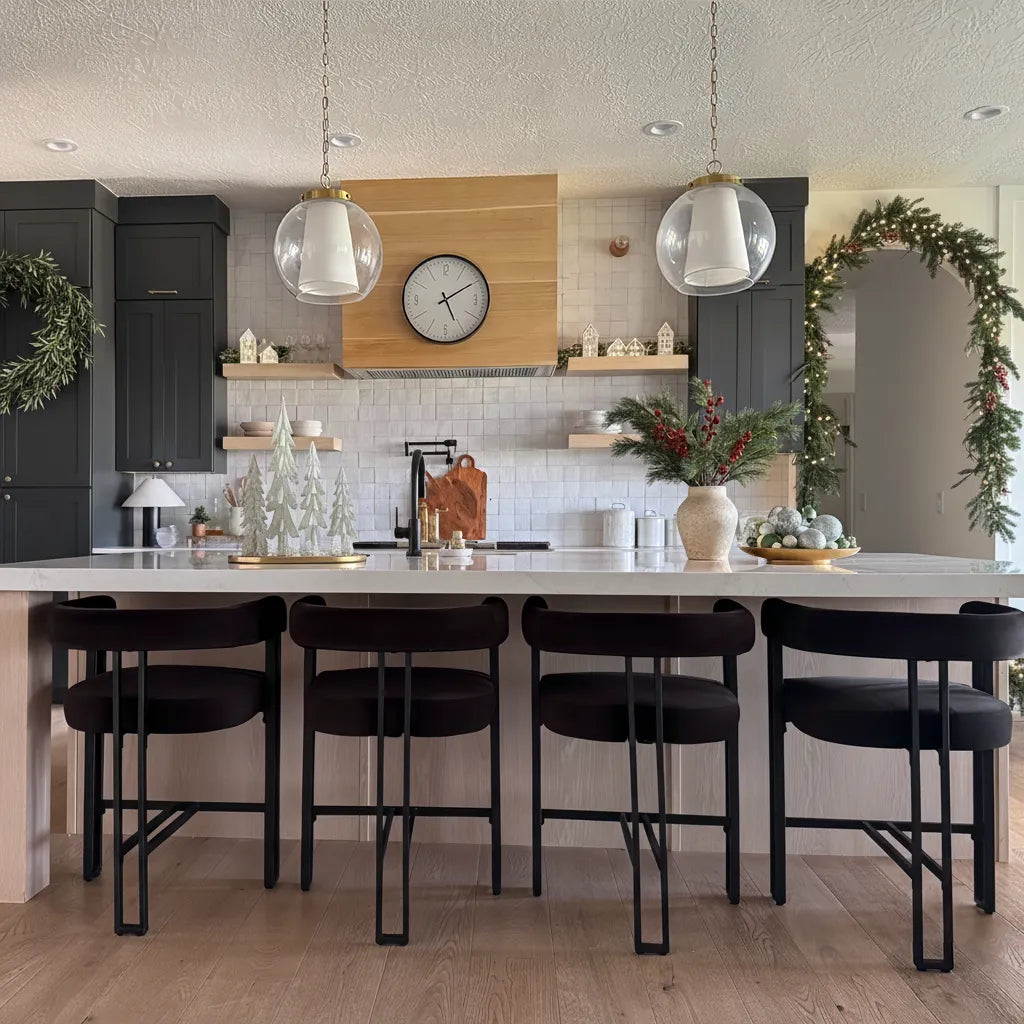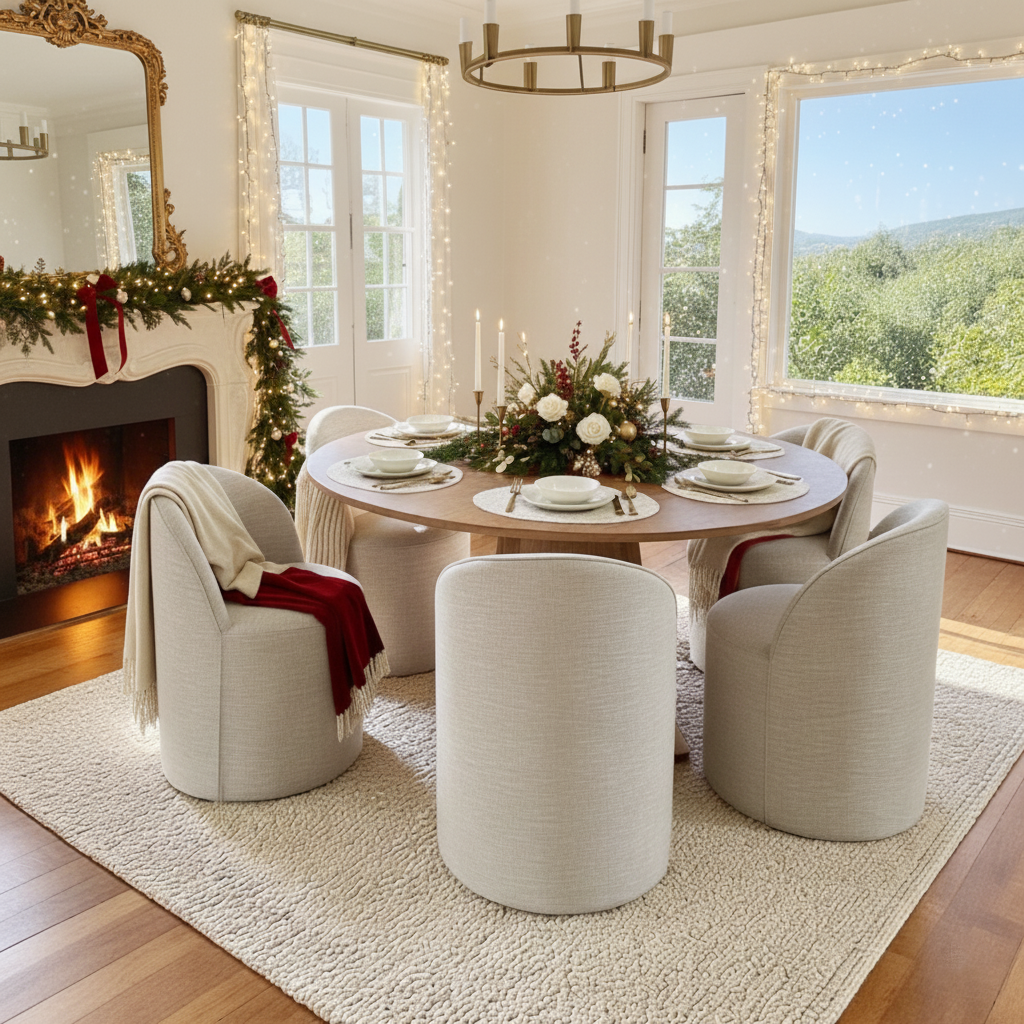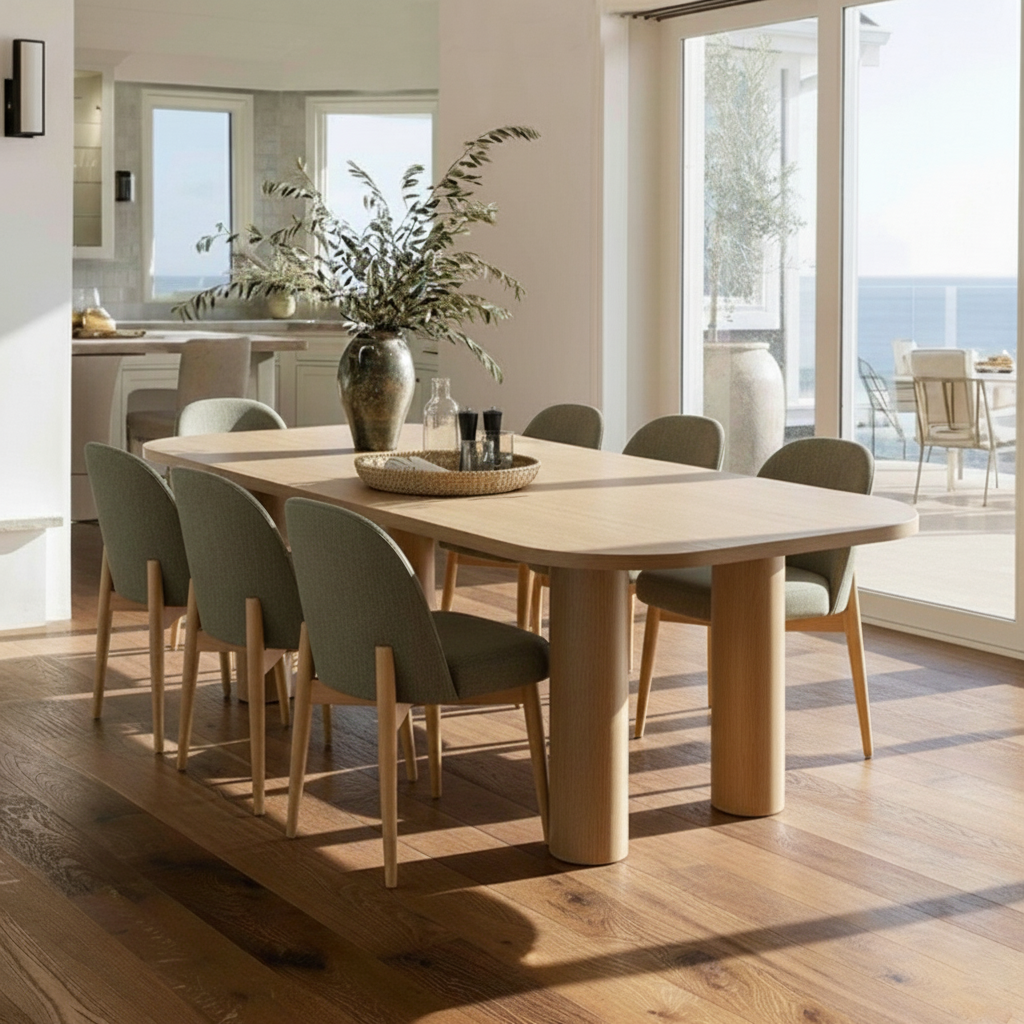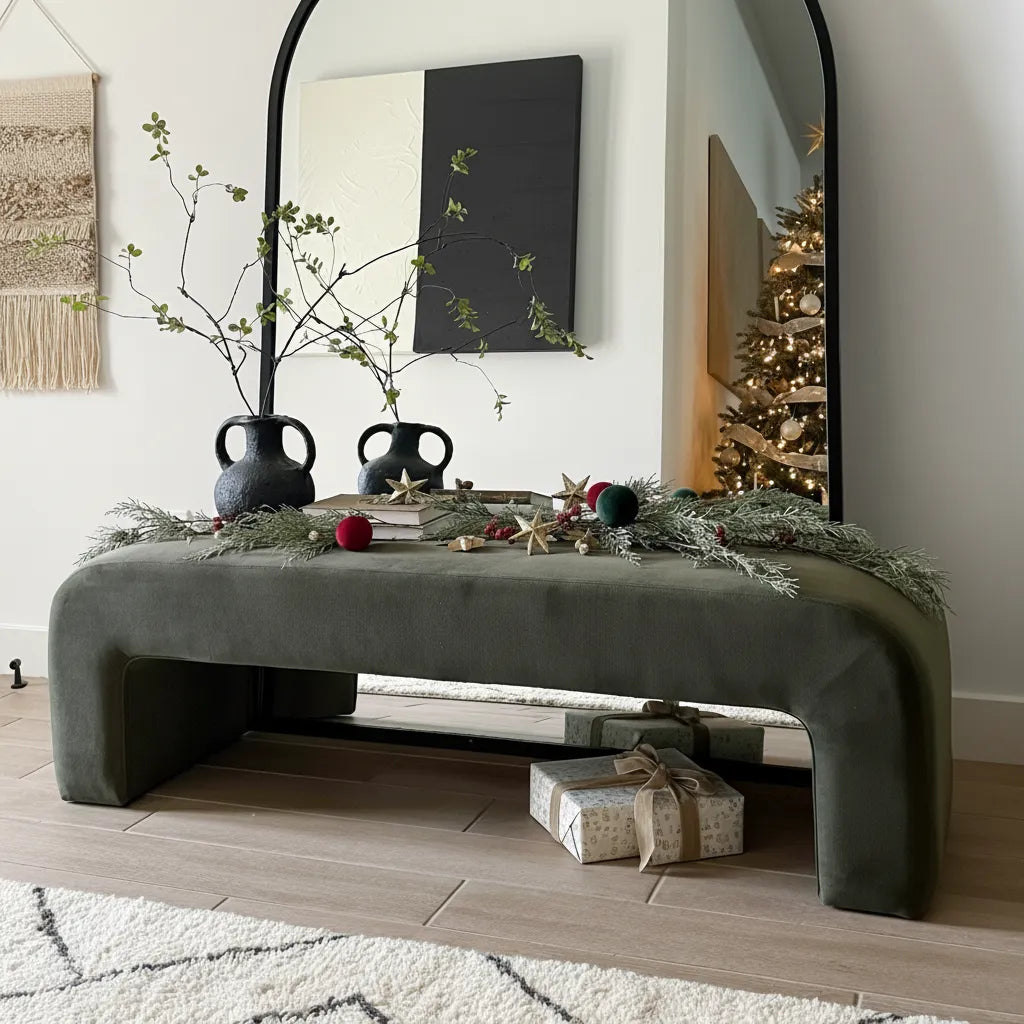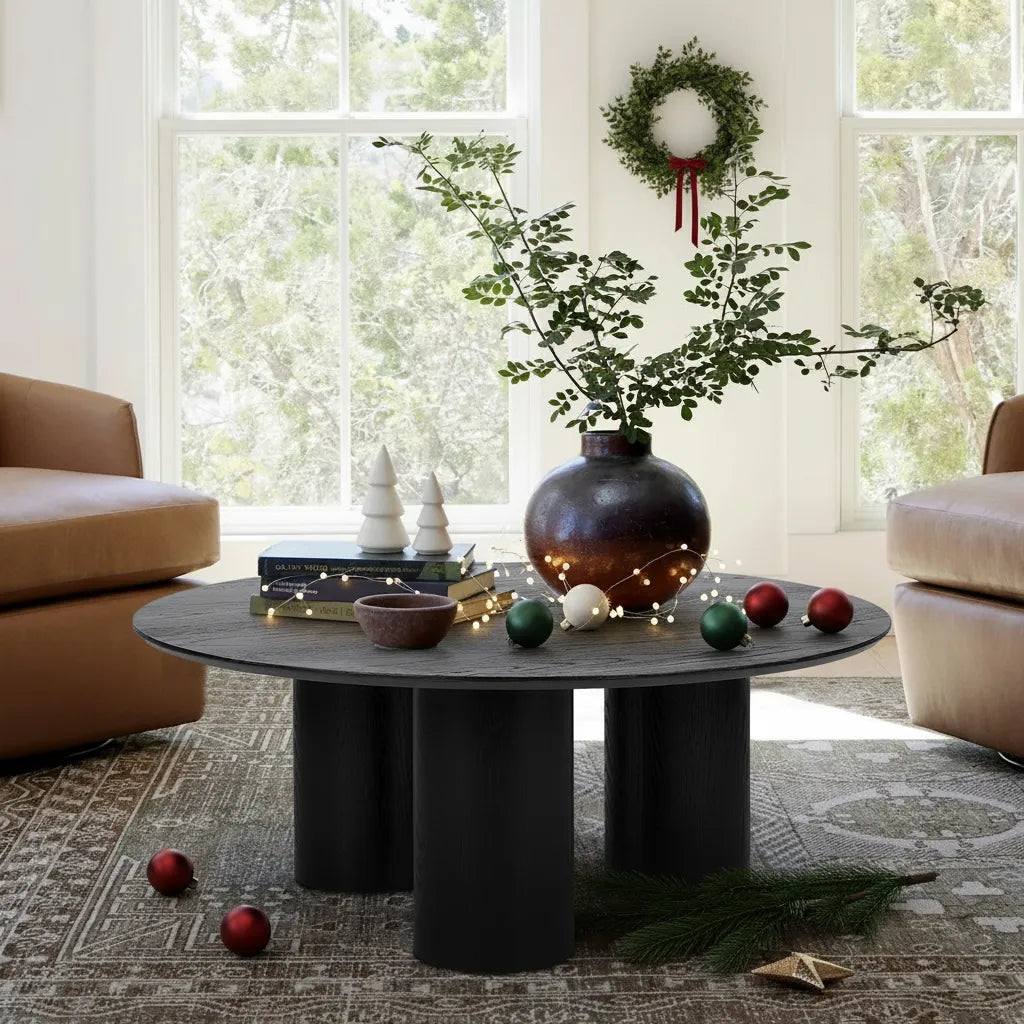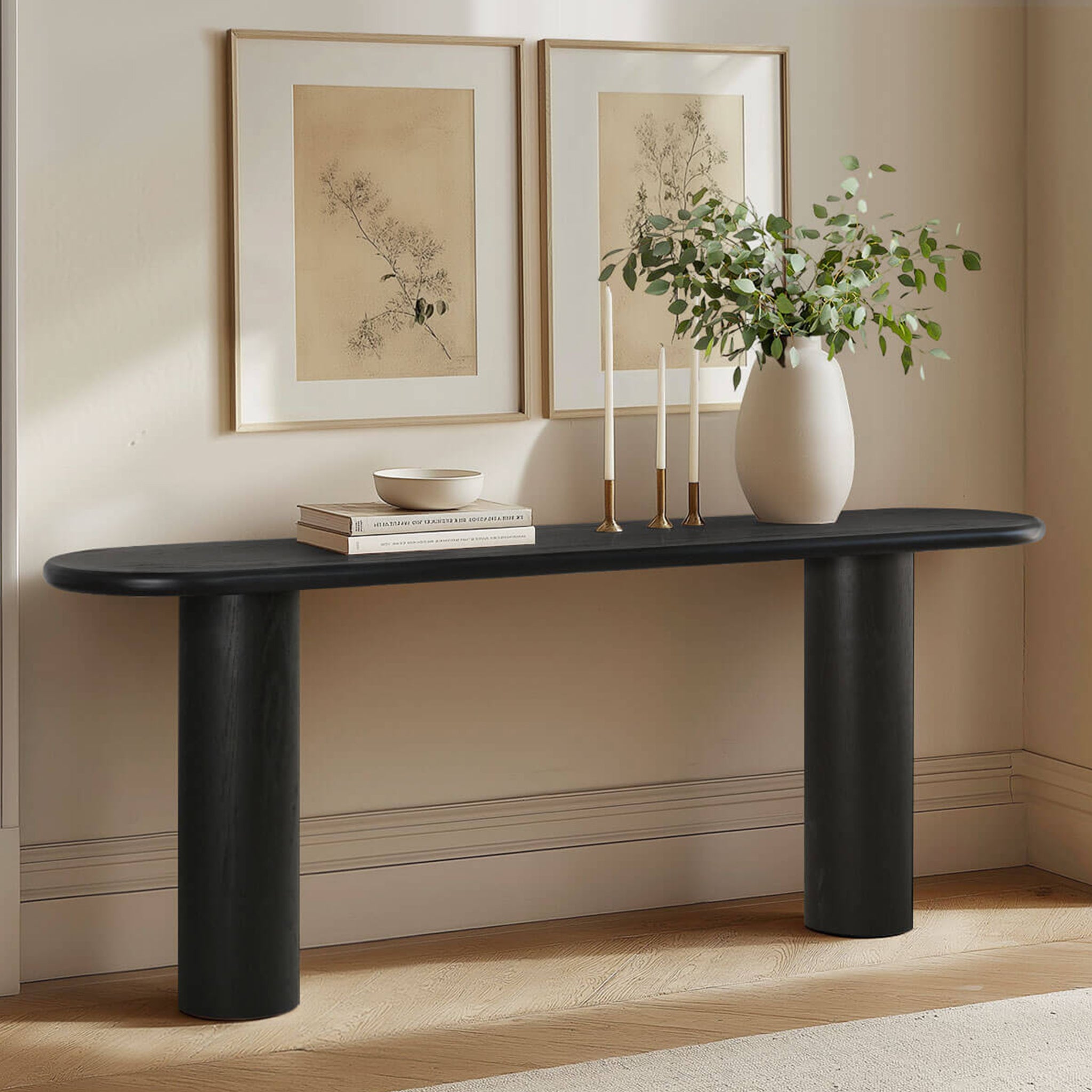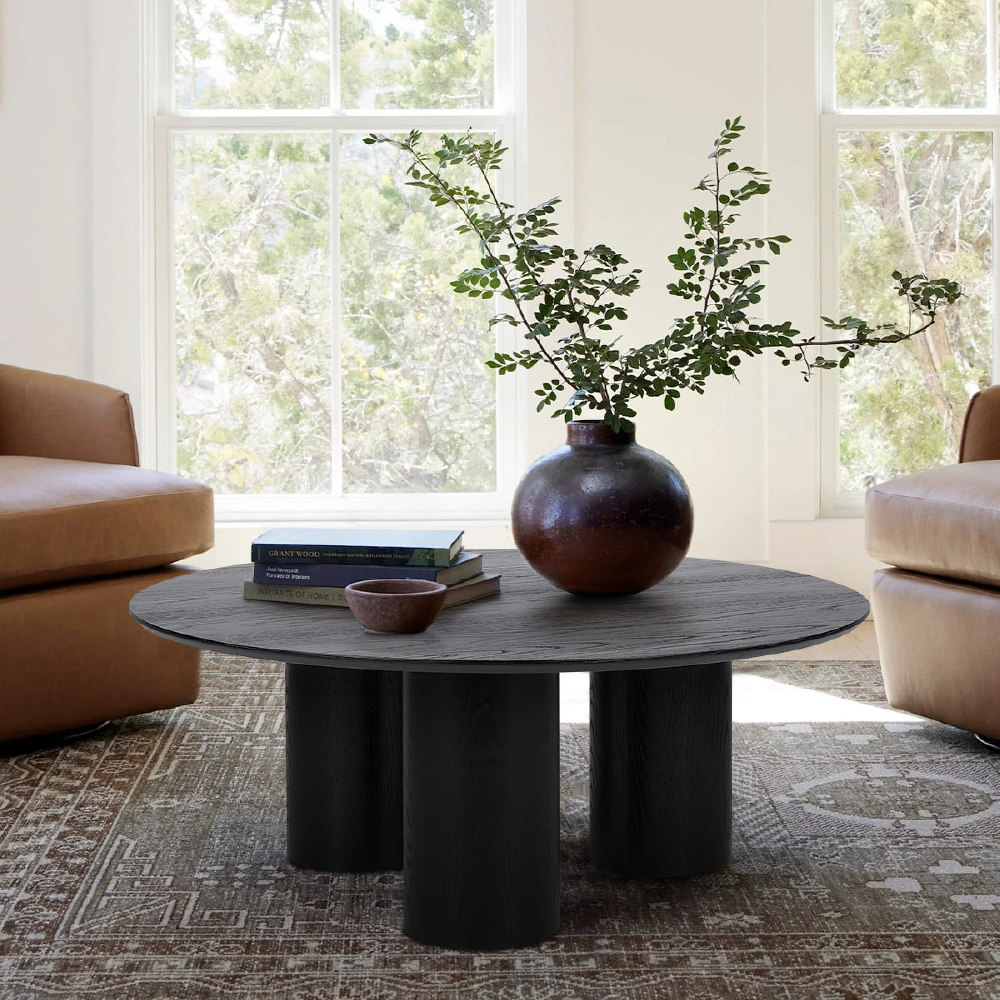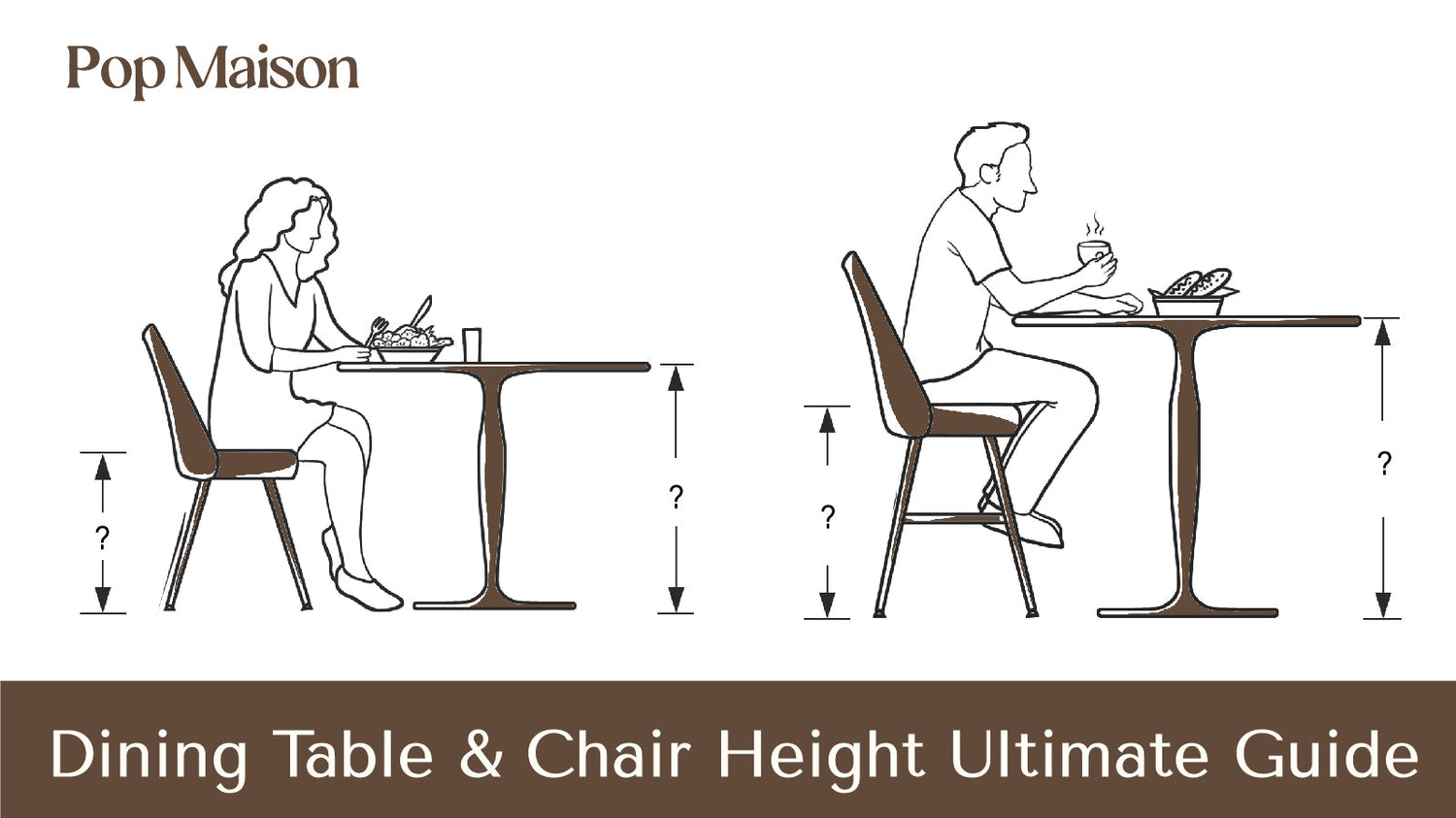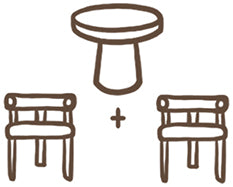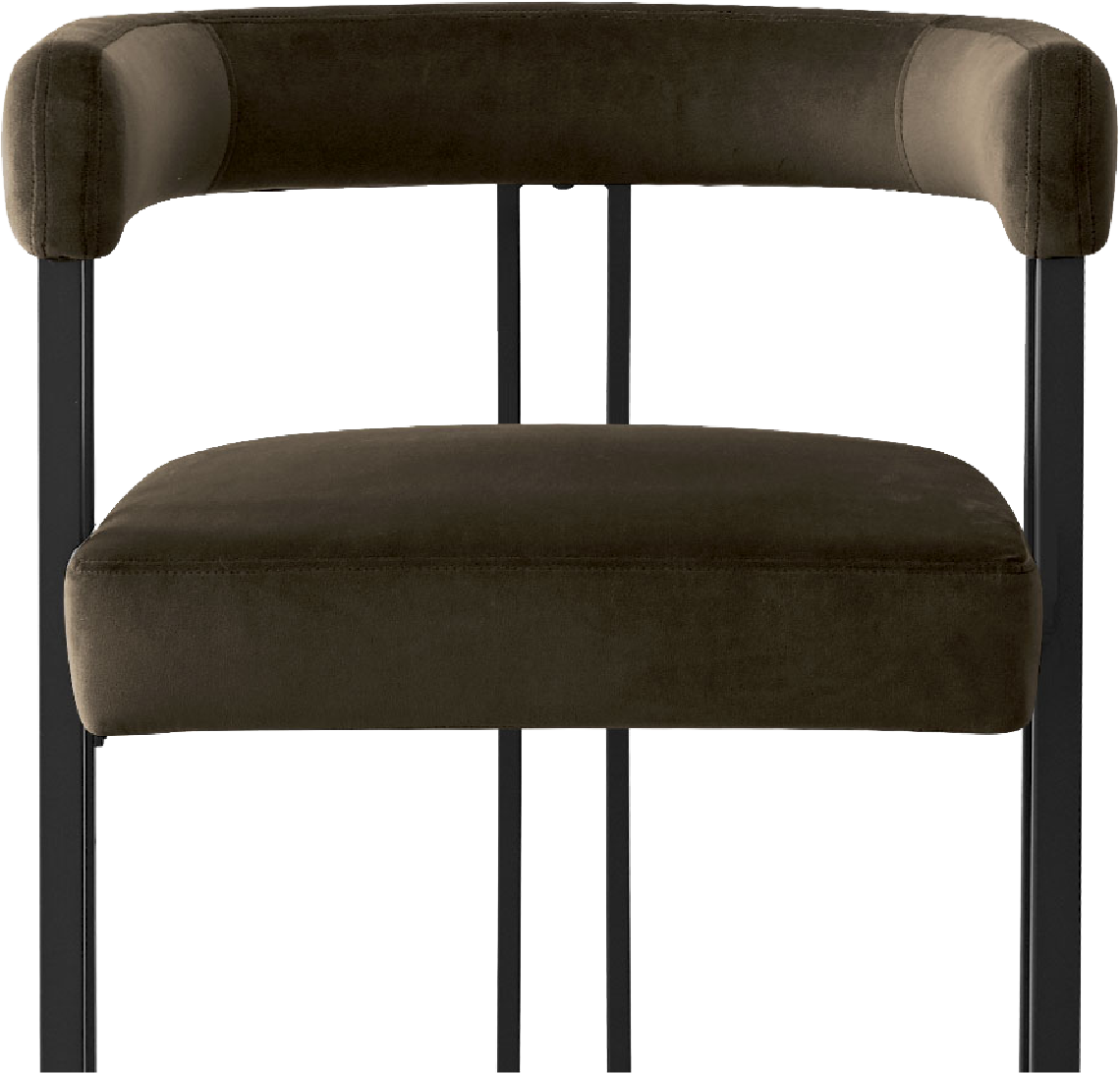Dining table height ranges from 28-30 inches for standard furniture, 34-36 inches for counter height furniture and 40-42 inches for bar height furniture. Chair height corresponds to tabletop height. Standard chairs are 18-20 inches high. Counter height chairs are 24-27.5 inches at the seat, and bar height chairs are 28-30 inches from the floor to the top of the seat.
This guide provides essential information on furniture size, pros and cons of each height, guidance for selecting your dining room furniture height, common mistakes to avoid, and tips for shopping for standard, counter height and bar height dining furniture.

|
Style |
Table Height |
Chair Height |
|
Standard Height |
28-30 Inches |
18-20 Inches |
|
Counter Height |
34-36 Inches |
24-27.5 Inches |
|
Bar Height |
40-42 Inches |
28-32 Inches (standard) |
Standard Height Table and Chairs
The standard height of a tabletop is 28 to 30 inches from the floor to the top of the tabletop. This is the essential measurement for determining the right tabletop height for comfortable dining for you, your family and guests.
The standard height of dining room chairs is 18 to 20 inches from the floor to the top of the seat. A few manufacturers make 17-inch chairs, but they aren’t as common.
These measurements provide 10-12 inches between the chair seat top and the tabletop, which is recommended for space and comfort.
Standard height dining tables and chairs are the most commonly chosen option by homeowners due to their traditional appeal and versatility.
Note: 28-30 inches for tabletops equals 71 to 76 cm. And 18-20 inches for chair seats equals 46 to 51 cm.
The Pros and Cons of Standard Height Dining Furniture
There are many good reasons to choose a standard height dining room table and chairs. This height is the most popular elevation, and as a result, it offers the widest range of collections, styles, materials, colors and finishes when considering your purchase. Due to size and choice, standard dining room furniture is the most affordable compared to countertop height and bar height furniture.
Standard height dining tables and chairs are suitable for casual, semi-formal and formal dining.
Standard height dining furniture is comfortable for people of average height and build. It produces normal sitting posture, while other heights do not, so you can sit naturally and without discomfort for a longer time, such as when conversing during and after a relaxed meal. This comfort zone includes older adolescents, teens and adults. Even younger children can be seated in a standard height dining room chair using a booster seat.
Chairs that are 18-20 inches high at the seat fit well with other common dining room furniture pieces including buffets and sideboards. The height is classic, and it blends well aesthetically in most dining areas. Finally, dining chairs that are standard height are very versatile. They can also be used at a desk or moved to the living room to seat guests.
One potential disadvantage is that standard height dining room furniture may be uncomfortable for people of large stature, especially tall individuals who prefer more legroom than this dining room furniture size allows.
Counter Height Table and Chairs
Counter height dining room furniture is a trendy alternative to standard height furniture. In this category, tabletops are 34 to 36 inches (86-91 cm) in height from the floor to the tabletop. This is the same average height of kitchen counters. Counter height chairs are 24 to 27.5 inches (61-70 cm) tall from the floor to the top of the seats.

The distance between counter-height chair seats and the tabletop is 8 to 12 inches depending on the set or combination of table and chairs you select. In most cases, this provides adequate thigh and knee space.
The Pros and Cons of Counter Height Table Dining Furniture
Counter height furniture finds a place in many modern homes, especially as a second option for dining. It fits great in small apartments too. Counter high dining furniture is most suitable for casual and semi-formal dining. As in pubs, coffee shops and casual restaurants, this style helps create a relaxed environment conducive to conversation.
Because the tabletops are the same height as countertops, the taller stature provides visual balance and appeal when used in the kitchen in proximity to the countertops. This dining furniture height also works well in open floor plans with a smooth transition between the kitchen and the living areas of the home. And the taller seats give better views out of standard-size windows.
The elevated height makes the furniture more comfortable when doubling as workspace whether you are seated or standing. The transition from standing to sitting and back to standing again is easier with this height furniture. Because it is taller, some countertop height dining furniture sets include storage beneath the tables and chairs for convenience.
One disadvantage to counter height dining furniture is that the taller height can be difficult for children, shorter adults and older adults to use.
Bar Height Table and Chairs
Bar height tables are 40 to 42 inches (102-107 cm) from the floor to the tabletop. Chairs for bar height tables are 28 to 30 inches (71-76 cm) from the floor to the top of the seat.
Designed to provide the ambience of a bar, bistro or café, bar height dining furniture is your tallest option for dining room tables and chairs. And it is considered the most casual style compared to standard and counter height dining furniture.
Bar height tables can be round or rectangular, typically designed to seat a smaller number of people than standard dining room tables. Styles include backless stools and chairs with low, medium or high backs.
The Pros and Cons of Bar Height Table Dining Furniture
While bar height furniture doesn’t replace standard height dining furniture in most homes, it provides a look that complements a casual, dynamic lifestyle. And the elevated seat provides a good view out windows and around the room, which is ideal when entertaining guests.
The taller height offers visual appeal, drawing the view upward and giving the room an open feel. Keep in mind that this may not be preferred in a room with low ceilings or low-hanging lighting!
Tables and chairs in this category often have a smaller, space-saving footprint, which makes them a good choice where space is limited. Chairs often come with footrests or lower rungs due to the distance to the floor, which improves comfort. And the chairs can be used at a breakfast bar, bar in a mancave or game room, patio tiki bar or similar elevated seating location.
When considering bar height dining tables and chairs, keep a few disadvantages in mind. First, the taller size of the chairs make it difficult and possibly dangerous for children or people with mobility issues to climb onto. Secondly, the elevated height and the leg extension it creates may become uncomfortable in a shorter period of time compared to sitting on standard height chairs with feet on the floor. Finally, due to the tall chairs and small footprint, they tip more easily than lower chairs.
Dining Chair Height Based On Different Table Heights (Chart)
The best height of the dining chairs is related directly to the height of the table – the tabletop. To optimize comfort and the ability to reach items on the table, the chair seat height must be 10-12 inches lower than the tabletop.
This chart gives the proper chair height for each common table height. It covers the full range of available table heights including standard height, counter height and bar height.
|
Chair Height (Chair Seat Height) |
Table Height (Height of the Tabletop) |
|
Chair Height for 24 inch table |
12 to 14 inches |
|
Chair Height for 25 inch table |
13 to 15 inches |
|
Chair Height for 26 inch table |
14 to 16 inches |
|
Chair Height for 27 inch table |
15 to 17 inches |
|
Chair Height for 28 inch table |
16 to 18 inches |
|
Chair Height for 29 inch table |
17 to 19 inches |
|
Chair Height for 30 inch table |
18 to 20 inches |
|
Chair Height for 31 inch table |
19 to 21 inches |
|
Chair Height for 32 inch table |
20 to 22 inches |
|
Chair Height for 33 inch table |
21 to 23 inches |
|
Chair Height for 34 inch table |
22 to 24 inches |
|
Chair Height for 35 inch table |
23 to 25 inches |
|
Chair Height for 36 inch table |
24 to 26 inches |
|
Chair Height for 37 inch table |
25 to 27 inches |
|
Chair Height for 38 inch table |
26 to 28 inches |
|
Chair Height for 39 inch table |
27 to 29 inches |
|
Chair Height for 40 inch table |
28 to 30 inches |
|
Chair Height for 41 inch table |
29 to 31 inches |
|
Chair Height for 42 inch table |
30 to 32 inches |
|
Chair Height for 43 inch table |
31 to 33 inches |
How to Decide On the Right Height Option
|
Standard Height |
Counter Height |
Bar Height |
|
|
Variety of Choice |
Excellent |
Good |
Good |
|
Comfort |
High |
Moderate |
Low/Moderate |
|
Style |
All Styles |
Casual, Rustic & Contemporary |
Casual & Contemporary |
|
Best Use |
Everyday dining |
Lunch, snacks, entertaining |
Quick meals, drinks, entertaining |
|
Versatility |
High |
Moderate |
Limited |
|
Accessibility/Safety |
High |
Moderate |
Low |
|
Suitable For |
All ages |
Older children & adults |
Teens & adults |
|
Best Ceiling Height |
8' and higher |
9' and higher |
9' and higher |
When deciding on the right height for your dining furniture, make the decision based on factors related to where the furniture will be used, its purpose, who will be using the tables and chairs, and your unique situation.
-
Where the furniture will be used: Assess the location. If you have a formal dining room, a space dedicated to dining, then a standard height table and chairs set is the clear favorite. Taller dining furniture will look out of place. Also, if the room has 8-foot ceilings, then a standard height set is best, though a counter height set might be considered if the room is not a formal dining room. When the room has 9-foot or 10-foot ceilings, taller sets will look more balanced.
-
Comfort is key: Standard height dining furniture is typically the most comfortable for the greatest number of people. This is especially true compared to bar height dining furniture that employs backless chairs or stools.
-
Room size: The space between the back of the chair and the wall should be at least 12 inches, so that people can get in and out easily. The distance from the table to the wall should be 36” on all sides to allow walking around the table. This might limit what size set you can use – and counter height and bar height sets seating 4-6 are better for small spaces.
-
The furniture’s purpose: Consider its functionality. When the entire family uses the furniture daily, then a standard height set also makes sense. This is because these sets are available to accommodate up to 12 or more people, while counter height sets and bar height sets usually accommodate a maximum of 6 people. If the furniture is a second set placed in a breakfast nook or the kitchen, and fewer people use it at most meals, then a bar or counter height set adds variety and interest.
-
Who uses the furniture: Is it your main dining furniture or a second, complementary set? Standard height furniture is by far the most popular style for everyday use. Consider the size and age of household members. For most people, a standard set will be the most comfortable. When the set is used for entertaining, casual lunches for the kids or a few friends, then something taller creates a fun, casual and conversational vibe.
-
Accessibility and safety: Standard height furniture is accessible to all including kids and the elderly who have trouble getting around. Counter height dining sets are easy to use for healthy adults and children from adolescence up. Pub or bar height dining furniture is most easily used by healthy adults. The taller the furniture, the more dangerous it is for young children and anyone with mobility problems.
Measuring Dining Table and Dining Chair Height
For chairs, measure from the floor to the top of the seat – this is how high you will be sitting. For tables, measure to the top of the tabletop. This is the height that your arms will have to reach when eating. The third important measurement is the distance between the top of the seat to the bottom of the table – the lowest part of the tabletop. For comfortable dining for all, the distance should be at least 8 inches, though 10 to 12 inches ensures comfort for larger diners.Adjustable Height Seating
Many dining room furniture manufacturers make adjustable height stools and tables. Typically they adjust between counter height and bar height using a large central screw system.
These unique sets give you the option of lowering the furniture for kids and those who would have difficulty getting on a higher stool. And the furniture can be raised for entertaining adults in a casual setting, creating visual interest and a relaxed setting.
Common Mistakes to Avoid
Dodging these blunders will ensure that you get a set that fits your needs and expectations.
-
Forgetting about cushion thickness: Upholstered dining room chairs are much more comfortable than hard seats, but they can raise the diner by up to a couple of inches. If the table has low sides – moulding projecting down from beneath the tabletop – then legs can feel cramped. It’s not a good combination!
-
Prioritizing style over comfort: Everyone wants a good-looking dining set. You’ll find comfortable options at all three heights, standard, counter and bar/pub height. And there are uncomfortable options in each. Try out chairs before buying them, when possible. When ordering online, read customer reviews about comfort and/or order one chair first when possible to check comfort before ordering the rest.
-
Choosing heights that don’t match well: When you buy a set, you can be sure that the table and chair heights work well together. When buying a table and chairs separately, be sure that the combo gives you 10-12 inches of space between the height of the chair seat top and the table.
-
Overlooking the armrest factor: Armrests on chairs usually mean that you have to sit further from the table. This makes raising your arms to the tabletop a little more difficult. If you choose chairs with arms, then cushioned or upholstered chairs or benches are best and less distance between the chair seat and tabletop is a good thing.
Tips for Shopping In Store and Online
When shopping online, you can get the same measurement information by reading the product specifications. If you’re concerned about comfort, purchase one chair to try out before ordering more.
Whether shopping online or at a store with a website, read reviews to learn from the experience of others. And know the store’s return policy before making your purchase.
What About the Seat Back Height
The height of dining room chair seat backs is less than 28 inches to 40 inches (71-102 cm) or higher depending on the style of the chairs. While that isn’t an essential height to know for choosing a dining set with table and chairs, the height of the seat back affects comfort when sitting and also the aesthetics of the set.
Most dining table seats have backs, though backless chairs are available too.
What About the Armrest Height
Armrest height on standard height chairs is 24 to 26 inches (61-66 cm) from the floor. With the standard height of a tabletop being 28-30 inches, you may be able to tuck the arm rests under the table to maximize the area around the table and to tidy up the space when the chairs are not in use.
The armrest height for counter height chairs and stools is 31 to 33 inches (79-84 cm), and the armrest height of bar height chairs is 37 to 39 inches (94-99 cm).
In all heights, most chairs, like those in the Mia Collection, are designed so that the arms are low enough to be tucked under the table when the chair is not in use and is pushed in.

